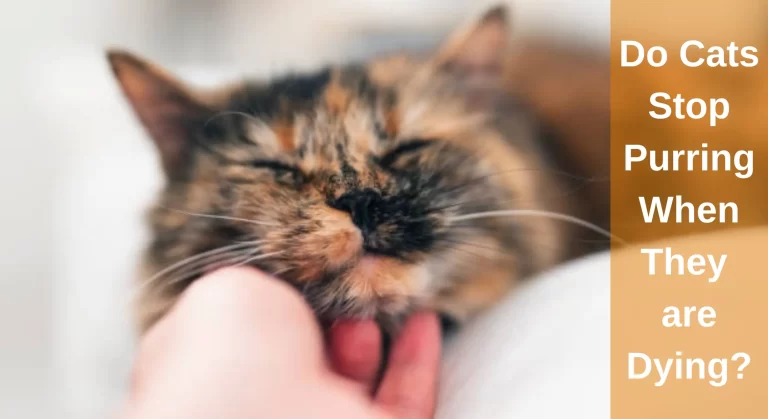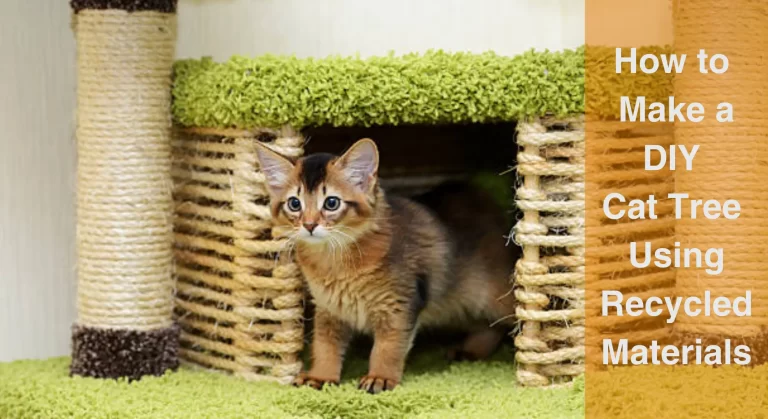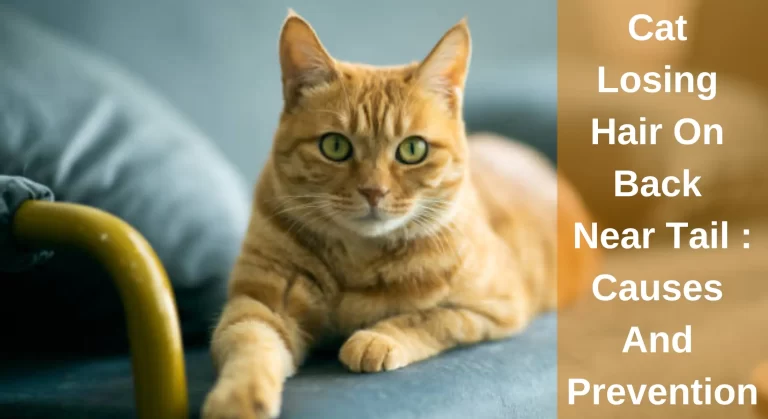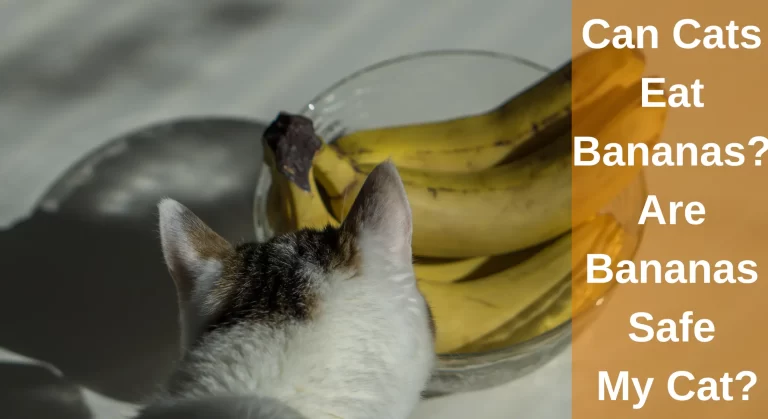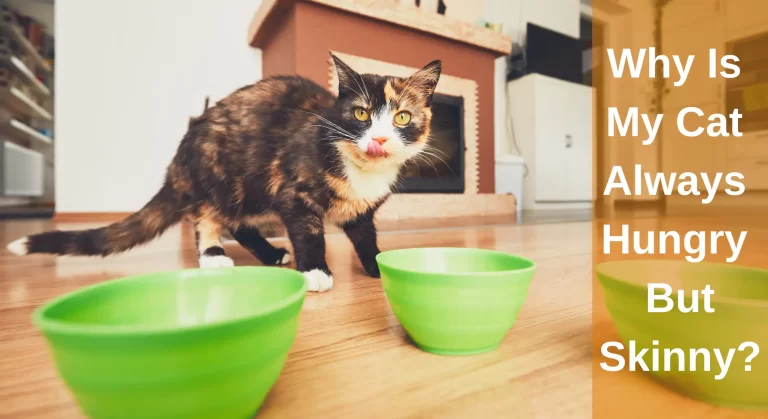A Guide To – How To Heal Dry Cat Paw Pads?
Felines’ paw pads are more than just footwear. They receive information about their surroundings through nerve receptors located on their paws. A cracked and dry paw can cause pain and discomfort. As a result of this discomfort, your cat may have difficulty walking, running, and jumping. The importance of maintaining healthy paws for your cat cannot be overstated. You should take care of your cat’s paws in order to keep them healthy.
Dry cat paw pads might hurt the cat and increase the danger of illness for your pet. There are several reasons for these cracked cat paws, such as exposure to rough surfaces, Dry air, excessive licking, severe weather, age, traumas, environmental circumstances, and the cat’s overall physical health might contribute to damaged cat paw pads. Consult your veterinarian for the best course of action if your cat’s paws start to feel dry, cracked, or inflamed.
Moisturise your cat’s paws with coconut, olive, or other food-grade oils as a home cure for dry paws. Maintain a healthy diet for your cat and keep it inside until its paw pads have healed. Make sure your cat drinks enough water and gets enough protein.
To maintain your cat’s health and cleanliness, taking care of your cat’s paws is essential. This quick guide will help you maintain the health and cleanliness of all the paw pads of all the cats in your household.
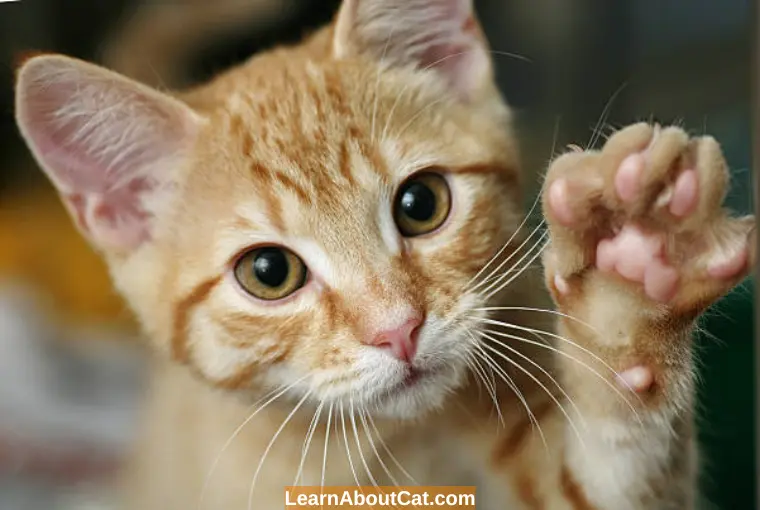
Why Do Cats Have Dry Paw Pads?
Because they are exposed to various textures and materials, your cat’s paws are vulnerable to damage and illness. Compared to indoor cats, outdoor cats are more susceptible since they are exposed to rocky, freezing, or muddy terrain and hot or sharp surfaces.
The following are typical reasons why your cat’s paws get dry and cracked:
1. Nasty Weather
This might include scorching conditions or frigid winters. Extreme temperatures in either direction can cause dry cat paws that become chapped and cracked.
2. Exposure to Uneven Surfaces
Cats walk with bare paws, exposing them to harsh elements and surfaces, including concrete and roadways since they lack protective covering for their paws. Their paws get dry and damaged as a result of wear and strain.
3. Dry air
Dry air is frequently brought on by inadequate insulation within the house. Your indoor cat could become dehydrated, resulting in dry cat paws.
4. A lot of Licking
Due to her constant licking, your cat may be prone to dry paws. If your cat spends most of its time indoors, tension, worry, or boredom may cause compulsive licking.
Find Out: Can Cat Paw Pads Change Color?
How To Treat Dry Cat Paws?
The following are typical remedies for dry cat paws:
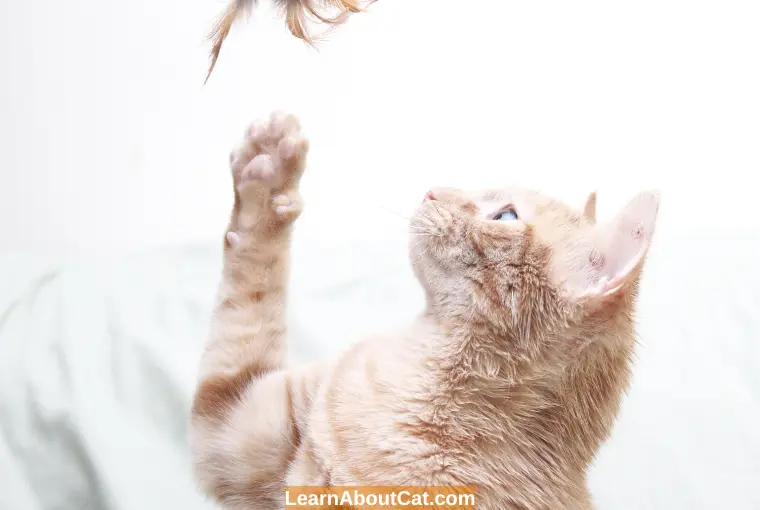
1. The Utilisation of Protective Attire, Such as Puppy Booties
Use puppy booties to ensure that your cat’s paws are shielded from harsh, hot, or cold surfaces. However, an unbalanced diet can also cause dry paw pads in indoor cats. An average-sized cat may fit comfortably in puppy booties, but you can also have some bespoke kitty booties fashioned for your cat. Keep your kitty inside.
2. Cocoa Butter
Natural antibacterial properties found in coconut oil aid in the healing of dry, damaged cat paws. It prevents paw infection, soothes dry skin, and hydrates it. It is also incredibly safe, even for cats to consume, and it may even assist digestion, cure hairballs, and freshen breath. Although this oil quickly enters the skin, avoid using too much on the paws.
3. Olive Oil
Olive oil is another fantastic remedy for treating dry cat paws because it is a natural and pure component. It relieves uncomfortable dry, cracked paws, especially those infected and inflamed, by being exposed to hot or cold surfaces like icy roads and heated pavements.
4. Adequate Hydration
Another visible sign of dehydration may be dry cat paws. Using a pet fountain will encourage your cat to drink more water since cats are drawn to the sound of running water. Try feeding your cat moist, moist canned food and skin and coat cat food mix, which is explicitly made for good skin and coat.
5. Supplemental Zinc
Another essential treatment for dry cat paws is to give your cat a zinc supplement. Veterinarians often advise giving a 2.5 to 5 mg zinc supplement once a day for two weeks or until the paw pads start to look better.
Red meat or chicken, both excellent zinc sources for cats, can also be included in a raw food diet for your cat. You could alternatively feed her a commercial raw food made up of organic meat, which provides amino acids for healthy skin and paws but no other grains.
6. Keep Feline Buddies Inside the Home
If you keep her inside, your cat is somewhat protected from dry cat paws. Installing a catio or cat enclosure in the backyard can allow your cat to spend some time outside if you see that she wants to go out.
7. A Diet High in Protein and a Protein Supplement
Dry cat paws might result from a protein shortage in cats. Avoid feeding your cat low-quality cat food that includes preservatives, undesirable carbs, and fillers; instead, give it protein-rich cat food. Your cat will get a balanced diet and maintain healthy skin and fur with food high in protein.
8. Fish Oil
This is a popular treatment for dry cat paws. After properly cleansing the paw pads, massage them. Fish oil contains a lot of omega-3 fatty acids. Its anti-inflammatory characteristics lower the chance of developing heart disease and arthritis, and it is known to stop the formation of cancer cells.
In senior cats, it lowers the risk of dementia by enhancing cognitive performance.
Also Read: How to Clean Your Cat’s Paws?
What Should You Do if Your Cat Won’t Get Her Paws Treated?
Make sure paw massages are a pleasant experience for your cat since some cats may resist handling and massaging their paws. Please ensure you have snacks on hand before treating her dry kitty paws. Provide her little treats as you clean and moisturise her dry, cracked paws. Every time she cooperates throughout treatment, always offer her a reward.
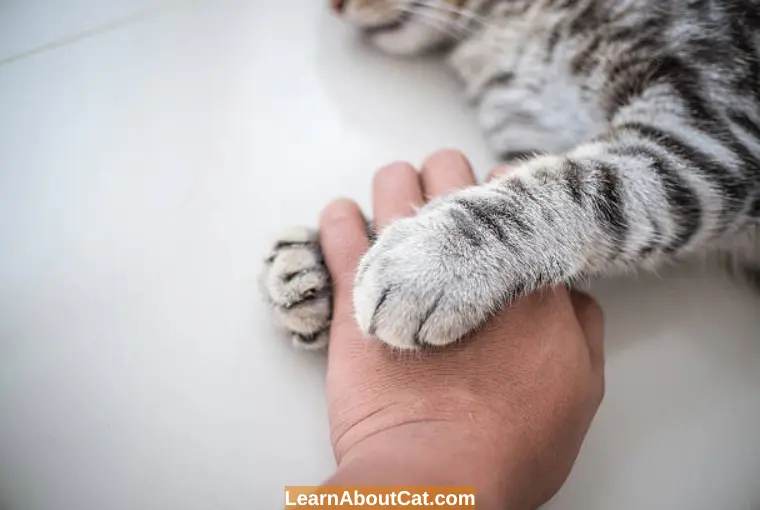
1. Guide to Cat Paw Care
While regularly checking your cat’s paws can help maintain them healthily, you may also search for indications that anything could be wrong with the paws. Your cat may have something lodged in one of its paws or might have hurt the paw if you see it limping or not applying pressure to a particular paw. You may need to pay close attention because cats are skilled at disguising their suffering. Additionally, an injured cat could be less cooperative when you examine them, so try to keep them relaxed and comfortable throughout the inspection.
You might need to acclimate your cat to having its paws touched if they need to get used to it. Getting into the habit of rubbing your cat’s paws whenever you hold or pet them can be beneficial. This will help you find any debris that could be stuck between the toes and paw pads and assist them in becoming used to having their paws stroked and handled.
2. Cleaning Paws
Use a soft cloth to clean all those small cat paw pads, the area surrounding the places, and between the toes before or after your examination. This will rid their toes of debris, chemicals, foreign items, dirt and litter dust.
3. Trim Your Cat’s Nails
To cut a cat’s claws, use a set of nail scissors designed specifically for cats. Just the tips should be trimmed; avoid the quick at all costs. Keep some styptic powder on hand if you accidentally cut into the brief; it will halt the bleeding. If you don’t already have any styptic powder, it is a good idea to pick some up at your neighbourhood pet supply store.
Intresting Reading: Why Do Cats Hate Getting Their Nails Cut?
4. Paw Examination
Once your cat is comfortable with you stroking their paws, please make a point of checking them every day, mainly after they come inside from an outdoor adventure. According to the Lexington, Kentucky-based Animal Care Clinic, look for cuts, wounds, and foreign objects. If anything is stuck in your cat’s paw, try to gently remove it with a pair of tweezers if you can, or call your veterinarian if it is stuck deeply.
5. Taking Care of Dry Cat Paw Pads
Your veterinarian may advise you to moisturise your cat’s paw pads with olive, coconut, or another food-grade oil that is safe for them to lick if they become dry, itchy, or cracked. To prevent her from tracking the oil throughout the home as it absorbs, you should limit them to a bathroom. Request a recommendation from your veterinarian for an excellent cat paw moisturiser if they require something more robust. Human-made precautions that might be dangerous if consumed.
Frequently Asked Questions
How long does it take for the paw pad of a cat to heal?
Fortunately, most cats who suffer from footpad injuries recover fully from painful and unpleasant conditions. The time it takes for the pet to recuperate can range from 10 days to three or four weeks, during which time it can experience movement problems.
Can Vaseline be applied to dry cat paws? Is it safe?
Yes, it is safe to use. You may apply Vaseline to your cat’s paw pads without the risk it will soothe the irritation. Vaseline is a potent moisturiser because of how thick and greasy it is. The natural oils that your cat’s body creates to protect its skin may be replenished. Small doses of Vaseline are also considered safe for cats to ingest.
Will cats get sick if they lick Vaseline?
If ingested in small amounts, Vaseline and petroleum jelly will not cause any harm. When cats ingest enough, they might suffer from an upset stomach, resulting in vomiting or diarrhoea.
Will the cat’s paw heal on its own?
In most cases, a cat’s paw scrape should heal on its own within a week, but if it does not or appears swollen and scummy, get in touch with your veterinarian.
Final Words!
Cat paw pads might gradually become brittle, cracked, or dry. Although some wear on a cat’s paws is natural, you may ease moderate dryness or crack by using coconut oil, olive oil, or cat paw pad balms on the cat’s feet. However, remember that excessive paw pad damage, such as swelling or bleeding, can signify severe immune system or health problems, skin conditions, dietary issues, or even an injury. You should seek immediate veterinary attention for these symptoms to provide your cat with the best possible care.
Related Posts:
Who is Isabella?
My name is Isabella, and I am a dedicated and knowledgeable cat enthusiast. With years of experience caring for cats and a deep love for felines, I made a mission to help other cat lovers navigate the challenges of cat ownership.

